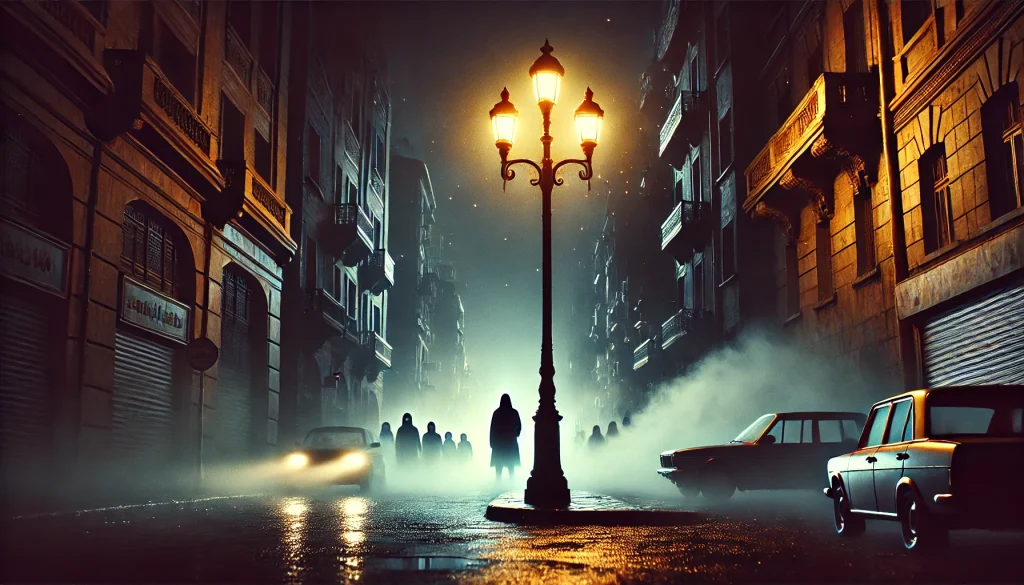
Why Has Horror Never Found a True Place in Egyptian Cinema?
Egyptian cinema is one of the oldest film industries in the world, dating back to the early 20th century. Yet, despite its rich history, one genre has never truly found its footing: horror. Unlike drama and comedy, which have flourished and evolved over the decades, horror has remained an underdeveloped and largely unsuccessful category in Egyptian cinema. But why? This question has lingered in my mind for years. After revisiting numerous Egyptian horror films, I can’t shake the feeling that the genre was never truly born in Egypt in the right way.
The Scarcity of True Horror Films in Egyptian Cinema
Looking at the history of Egyptian horror films, I can hardly name more than one or two that can genuinely be classified as good horror films. For me, the only real standout is Safir Gohanam (1945), directed by Youssef Wahby, which successfully blended psychological horror with dark storytelling. Beyond that, there’s an undeniable void in Egyptian cinema when it comes to films that have delivered genuine fear.
Many films labeled as horror in Egypt either lack the necessary intensity or unintentionally veer into comedy. El Ens w El Gen (1985), despite starring Adel Imam, leaned more toward suspense than horror. El Ta3weeza (1987) attempted to explore supernatural horror but ended up being more amusing than frightening. This isn’t just a problem of execution; it’s a fundamental issue with how horror is perceived and delivered in Egyptian cinema.
Even more recent attempts have either been disastrous or completely forgettable. Street 18 (2006), which tried to introduce slasher elements, was not just a failure as a horror film but an insult to filmmaking itself. Then there was Ward (2013), a found-footage attempt clearly inspired by Paranormal Activity, but it neither broke new ground nor gained any real support from the industry.
Why Doesn’t Horror Resonate with Egyptian Audiences?
One of the key reasons horror films have struggled in Egypt is the nature of the audience. Egyptians either don’t scare easily, or they require a very specific kind of horror that filmmakers have yet to master. In my view, there are only two horror subgenres that could work in Egypt: demonic possession and supernatural entities rooted in folklore. Even then, ghost stories don’t seem to have the same effect on Egyptian audiences as they do in Western or Asian horror.
Why is that? I believe Egyptians have a natural immunity to fear. Historically, they have endured hardships, political turmoil, and societal challenges, and their primary coping mechanism has always been humor. Egyptians confront tragedy with sarcasm, turning even the darkest moments into a joke. This explains why comedy dominates Egyptian cinema—it’s ingrained in the cultural fabric. At the same time, it’s fascinating to see that the same audience that craves comedy is also deeply moved by emotional drama. We are a people who laugh hard and cry even harder, only to laugh again to forget what made us cry.
A Wealth of Material Left Untapped
Egyptian culture is overflowing with myths, legends, and eerie folklore that could serve as the perfect foundation for horror films. Tales of djinn, haunted tombs, and forbidden rituals are deeply embedded in Egyptian traditions. Unlike many other countries, Egypt doesn’t lack the raw material for horror—the problem lies in translating these stories effectively into cinema.
There are additional obstacles beyond just audience preferences. Technical limitations, poor visual effects, and censorship restrictions have all played a role in stifling the horror genre. Effective horror relies on atmosphere, unsettling visuals, and psychological depth—elements that Egyptian cinema has struggled to execute due to budget constraints, lack of expertise, and regulations that limit the portrayal of supernatural themes and demonic possession.
Can Egyptian Horror Evolve?
Despite its troubled history, I don’t believe Egyptian horror is doomed. Some films, like 122 (2019), have attempted to bring psychological horror to the forefront. With the rise of streaming platforms like Netflix and Shahid, there are now opportunities for filmmakers to experiment outside the constraints of traditional cinema.
Perhaps the key to success lies in embracing what makes Egyptian horror unique—its folklore, its superstitions, and the deeply rooted fears within its culture. If filmmakers can tap into these themes while improving their storytelling and production techniques, horror may finally find its place in Egyptian cinema. Until then, we remain a people who laugh at what’s supposed to terrify us—perhaps making that the scariest reality of all.

I am extremely inspired together with your writing
talents and also with the format on your blog. Is this
a paid subject matter or did you modify it yourself?
Anyway stay up the excellent high quality writing, it is uncommon to see a great weblog
like this one these days..